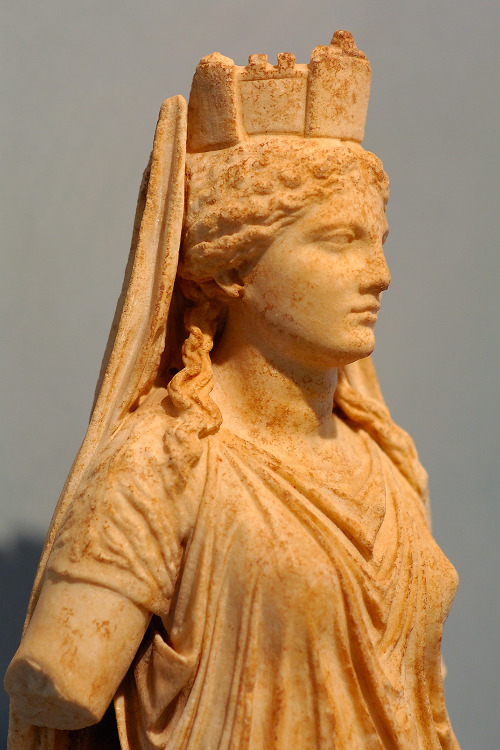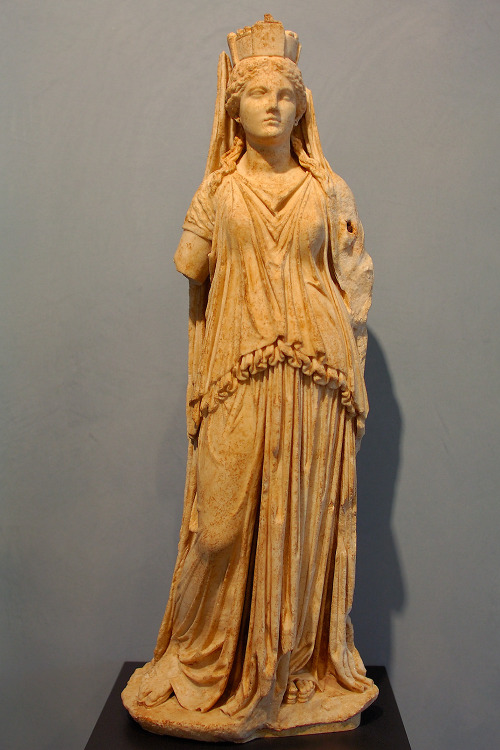hildegardavon:Tyche (goddess of good fortune, especially of a city)Greek, 150-100 BC, marbleGetty -
hildegardavon:Tyche (goddess of good fortune, especially of a city)Greek, 150-100 BC, marbleGetty - Digital imagesThis 33 inch Hellenistic-period Greek marble statue of Tyche, identified by the crown shaped as a city wall, is one of the antiquities which the Getty returned to Italy. The small size of the sculpture suggests that it was used for private worship. Holes in the ears and the back of the neck indicate that the statuette was originally adorned with earrings and a necklace. Originally purchased from the Fleischman collection for $2 million (the Fleischmans were on the board of the museum at the time). The statue was depicted, before it was cleaned of the encrusted dirt, on the Medici Polaroids which were seized in Geneva.Several features of this statue give the impression that it is a distinctly late Hellenistic interpretation of the earlier model. The thong sandals with thick soles indented between the big toe and the others are typical of High Hellenistic statues and remained fashionable through the second century BC. The thin chiton gathered and sewn to a neckband is common to goddesses on the altar at Pergamon among others. Over the chiton Tyche wears a peplos, an old-fashioned garment which was not often portrayed by Hellenistic artists. This peplos is different than Classical peplophoroi in that it is long enough to trail on the ground, and the fabric of the upper dress clings to the body and falls in deep folds around the legs -- source link
Tumblr Blog : hildegardavon.tumblr.com
#sculpture

